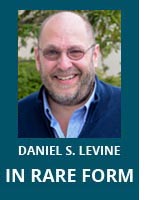 FDA Commissioner Scott Gottlieb this week sparked excitement that the agency is readying to release a new framework to help speed the path to market for new gene therapies.
FDA Commissioner Scott Gottlieb this week sparked excitement that the agency is readying to release a new framework to help speed the path to market for new gene therapies.
Speaking at the Alliance for Regenerative Medicines Annual Board Meeting in Washington, D.C., Gottlieb offered a preview of what to expect from the agency as it readies to release draft guidance documents adressing its framework for the manufacturing and clinical development of gene therapy products.
He noted an MIT prediction that by the end of 2022 the FDA would approve 40 gene therapy products from a pipeline of 930 products. Nearly half of those approvals would be for products targeting cancer, according to MIT.
“I don’t know if their estimates are right or wrong. But I know that directionally, these predictions are correct,” he said as he pointed to the first three approvals of gene therapies: two cell-based gene therapies for blood cancers, and a gene therapy to address a form of hereditary blindness this past year. “The promise is very much becoming a reality.”
Contained in Gottlieb’s comments, though, are recognition that gene therapy is different than the drugs that the FDA also regulates. This may seem like an obvious point that is underlined by the very fact that the agency is creating a framework for these therapies. Nevertheless, it seems that drugmakers, regulators, patients, and payers too often don’t challenge whether they are trying to wedge these therapies into an existing paradigm for how to move a therapy from discovery to patients, rather than matching the scientific innovation with innovation in regulatory, business, manufacturing, and delivery models.
The FDA framework for gene therapy will address the manufacturing and clinical development of these products. On the clinical side, Gottlieb suggests that unlike traditional drug reviews that focus mostly on product rather than process issues, the more challenging questions for gene therapies relate to manufacturing and quality questions, rather than establishing efficacy.
Because the question of durability can’t be answered adequately in a clinical trial for these therapies, Gottlieb argues for the use of accelerated pathways in conjunction with post-market studies that can confirm these therapies are meeting their expectations.
The agency expects to provide an accelerated pathway for gene therapies when it releases its framework. Gene therapies for hemophilia are expected to be the first beneficiaries of these efforts.
In the realm of manufacturing, Gottlieb called current processes for producing gene therapy vectors “inefficient” and said that this has created a lack of manufacturing capacity and required great expense to produce vectors.
“What’s needed are more efficient and standardized production processes for developing gene therapy vectors,” Gottlieb said.
To address that, the FDA is embarking on an initiative with a variety of partners to improve the yield of cell lines used to produce gene therapy vectors. The agency is also exploring advanced manufacturing technologies.
Gottlieb also argued that the pharmaceutical manufacturing paradigm of supporting early-stage development with drug produced though a pilot process before graduating to a commercial process developed for late-stage development and marketing doesn’t fit the realities of gene therapies.
“This paradigm worked well and saved time and money when only one out of ten or twenty products eventually made it to market, and when the ultimate market size was many thousands or millions of individuals,” he said. “Now we’re in a place where clinical trials demonstrating safety and effectiveness for cell and gene therapies may only require a few dozen individuals in order to demonstrate that the products are safe and effective.”
He said the FDA is encouraging sponsors to develop scalable manufacturing processes with inherent quality attributes that can support scale-up and licensure.
It may be that gene therapy is an unfortunate term. As one-time treatments, perhaps a better paradigm for them is as procedures. While the therapeutic model may work for gene therapies for rare conditions with relatively large populations, the therapeutic model may never accommodate the most desperate populations with life-threatening conditions that ultra-rare conditions too small to attract even million-dollar gene therapies.
For those conditions, we may need a way to marry an approved vector in a customized process with a validated gene and find ways to treat patients with gene procedures.
May 23, 2018
Photo: FDA Commissioner Scott Gottlieb

Stay Connected
Sign up for updates straight to your inbox.
